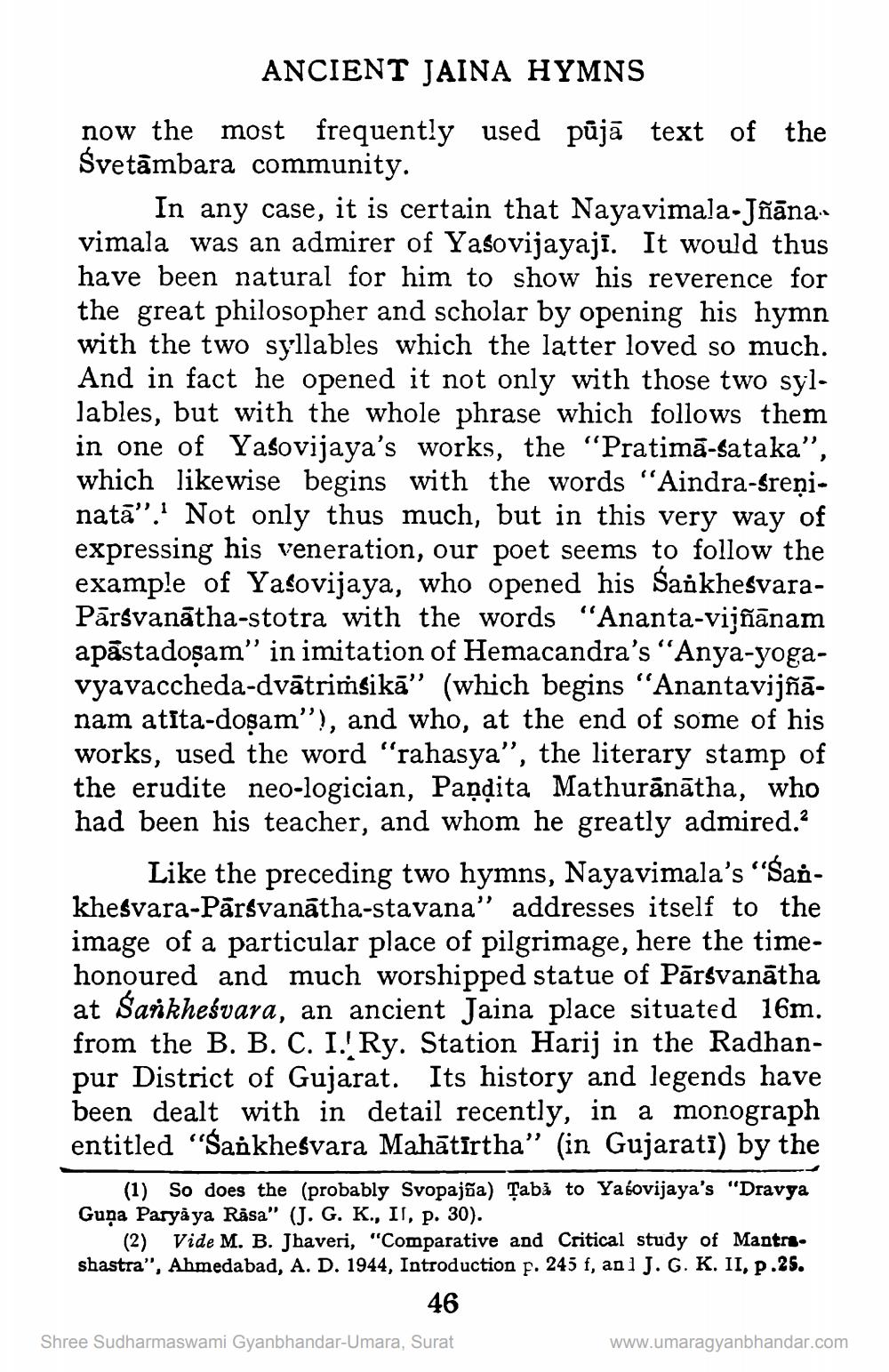________________
ANCIENT JAINA HYMNS
now the most frequently used půjā text of the Svetāmbara community.
In any case, it is certain that Nayavimala Jñāna. vimala was an admirer of Yasovijayajī. It would thus have been natural for him to show his reverence for the great philosopher and scholar by opening his hymn with the two syllables which the latter loved so much. And in fact he opened it not only with those two syllables, but with the whole phrase which follows them in one of Yasovijaya's works, the "Pratimā-sataka”, which likewise begins with the words "Aindra-sreņi. natā”! Not only thus much, but in this very way of expressing his veneration, our poet seems to follow the example of Yalovijaya, who opened his SankhesvaraPārsvanātha-stotra with the words "Ananta-vijñānam apāstadoşam" in imitation of Hemacandra's "Anya-yogavyavaccheda-dvatrimsikā" (which begins "Anantavijñā. nam atita-dosam"), and who, at the end of some of his works, used the word "rahasya", the literary stamp of the erudite neo-logician, Paņdita Mathurānātha, who had been his teacher, and whom he greatly admired.?
Like the preceding two hymns, Nayavimala's "Sankhesvara-Pārsvanātha-stavana" addresses itself to the image of a particular place of pilgrimage, here the timehonoured and much worshipped statue of Pārsvanātha at Sankheśvara, an ancient Jaina place situated 16m. from the B. B. C. I. Ry. Station Harij in the Radhanpur District of Gujarat. Its history and legends have been dealt with in detail recently, in a monograph entitled "Sankheśvara Mahātirtha" (in Gujarati) by the
(1) So does the (probably Svopajña) Țabi to Yasovijaya's "Dravya Guņa Parya ya Råsa" (J. G. K., II, p. 30).
(2) Vide M. B. Jhaveri, "Comparative and Critical study of Mantra. shastra", Ahmedabad, A. D. 1944, Introduction p. 245 f, anl J. G. K. II, p.25.
46
Shree Sudharmaswami Gyanbhandar-Umara, Surat
www.umaragyanbhandar.com




